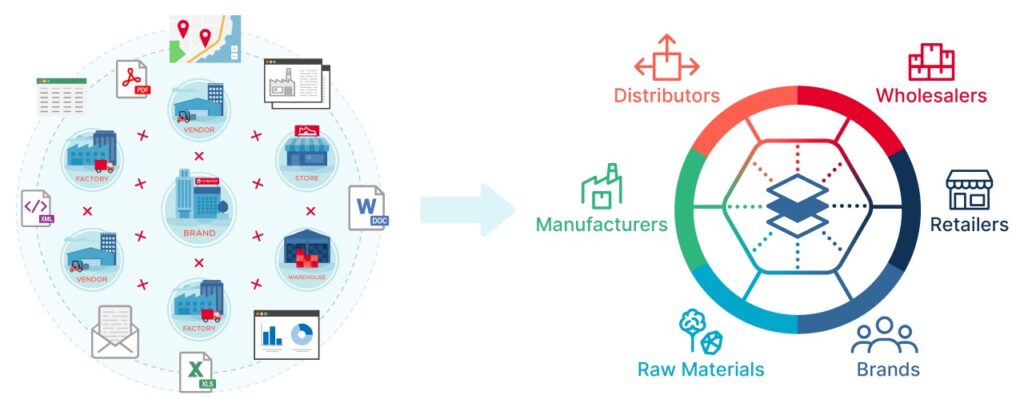
According to QIMA’s Q2 2022 barometer, the most recent sourcing disruptions led brands to accelerate the diversification of their sourcing locations from China to countries such as India and Bangladesh. But brands still tend to lack visibility into their supply chain, thus leading to more trust and transparency issues.
Supply chain managers receive scattered data from different factories, which makes it impossible for them to measure performance without any actionable insights. This means many fashion brands take a reactive approach to address risks.

The importance of consolidating data into a single source of truth
Most brands and retailers agree on the need to digitize their supply chains to become more resilient, but in reality, companies are sitting on a huge amount of data that they have little or no ability to analyze to make better decisions.
Today, supply chain managers receive scattered data from different factories, which makes it impossible to measure performance without any actionable insights. This means that many fashion brands are taking a reactive approach to addressing their risks.
By using fragmented workflows to collect manufacturing data, leaders are left with non-standardized reports that don’t provide the ability to analyze performance metrics over time. Instead, by incorporating suppliers into a single source of what is expected, brands can collect reliable data across their entire value chain and make decisions based on facts rather than their feelings.

Making risk-based decisions based on actionable insights
Data is the next frontier for product quality control and auditing. The textile industry needs to be able to leverage accurate data collected along the product manufacturing journey to make better decisions and move to a predictive approach to quality risk.
With actionable analytics, risk-based processes, automation and advanced machine learning, brands can improve product quality as they—and their vendors—can identify where and how to reduce and prevent defects. During auditing, compliance officers will gain visibility into their suppliers’ production methods, ensuring more sustainable sourcing.

Implementing data-driven quality management
The first piece of the digital transformation journey is People. Companies must make proper training available on industry-proven quality practices for their internal teams and suppliers to inspire a culture of quality excellence throughout their value chain.
The second piece of the puzzle is Processes. With multiple suppliers around the world, having all stakeholders working on the same processes and being able to adapt it based on performance and risk becomes a necessary way to automate tasks and prevent quality issues.
Finally, the correct Technologies must be adopted. There are a lot of exciting innovations coming up for supply chains, from 3D printing to blockchain. But for the supply chains dealing in the fashion industry, the priority should be to move away from the widely used pen-and-paper approach. In fact, using a mobile app powered with auto-generated reports and voice recognition for measurements can save up to 50% of inspectors’ time while performing inspections and audits.
In today’s fragmented supply chains, implementing a single digital platform such as QIMAone to assign the right quality and compliance process to the right team, whether internal, factory staff, or third-party agencies like QIMA, becomes a necessary means to effectively improve audit and inspection programs.

